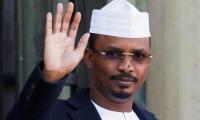PESHAWAR: Lack of funds and deficiency of required human resources have been hampering the smooth functioning of Elementary and Secondary Education Foundation (ESEF) that has been imparting formal education in an informal manner to the children who don’t have easy access to educational institutions.
A recent visit of Provincial Minister of Elementary and Secondary Education Shahram Khan Tarakai to the foundation’s headquarters and the commitments he made there may prove helpful for this important body to overcome challenges and take care of the out-of-school children in an effective manner.
The foundation, which was literally dormant during the past several years owing to a host of reasons, has made a successful take-off again after the appointment of the new managing director Zariful Maani. During the provincial minister’s visit, a detailed briefing was given to him in the presence of all the officers of the education department and the foundation. The minister expressed his satisfaction over the activities of the foundation and assured all out support in enabling it to do its job.The foundation has extended its network to 25 districts of the province. The newly merged districts are managed by another similar foundation.
The foundation runs Girls Community Schools (GCS) and Idara Farogh-e-Taleem Voture Scheme (IFTVS) for promoting education, especially among the out-of-school children. Both GCS and IFTVS are meant for enrollment of out-of-school children.
Under the Girls Community Schools initiative, informal educational institutions are established with support of the local community to educate children, mostly girls, till grade 5. Currently some 127,000 students including 85,000 girls are enrolled in the over 2,000 community schools across the province.
Under IFTVS 52,000 students are enrolled in some 621 private schools in different parts of the province in places where government schools are not available. The ratio of boys and girls’ students enrolled under IFTVS is 50:50.
Officials engaged in the scheme believe that the number of students has decreased during the Covid-19 pandemic, but the actual figures would be obtained once the schools are fully reopened. Apart from closure of the schools due to the pandemic, another major reason for the students’ dropout is non-availability of mainstream educational institutions after grade 5. According to officials, the students who complete their primary level in the community schools have no real option to get admission in higher classes.
Though exact data of the out-of-school children in the province is not known, some 2 to 2.5 million children have not been enrolled in educational institutions. The provincial government organized several drives to bring the out-of-school children to the school, but the number recorded an increase instead of decreasing.
According to the survey conducted by the Elementary and Secondary Education department in 2017, the total number of out-of-school children in the province was 2 million. However, it must have been increased as more dropouts were reported during the past two years and no systematic survey could be conducted to find out the actual number.
The ESEF can play an effective role in overcoming the issue of the out-of-school children, but those at the helm of affairs need to focus serious attention on it. Currently, the foundation is battling with the serious challenges of funds as well as human resource scarcity. The foundation requires funds amounting to Rs2,480 right now to meet its current expenditures and clear its liabilities, a senior officer told The News. The total budgetary estimate for the current financial year without new targets was Rs2,750 million, including liabilities of Rs486 million. But the provincial government has so far released Rs550 million only to it. As far as human resources are concerned, the foundation has a total of 389 positions at the district level, but 262 are vacant. At the headquarters level only 133 positions are filled of the total 515 while 282 are vacant
US envoy and Pakistani minister reiterate commitment to further enhancing partnership
Pair say their father had been raping eldest girl for a year, and had twice attempted to rape younger girl
Committee's mandate is to review initiatives addressing enforced disappearances
A re-polling was held at 15 polling stations of this constituency on January 5







